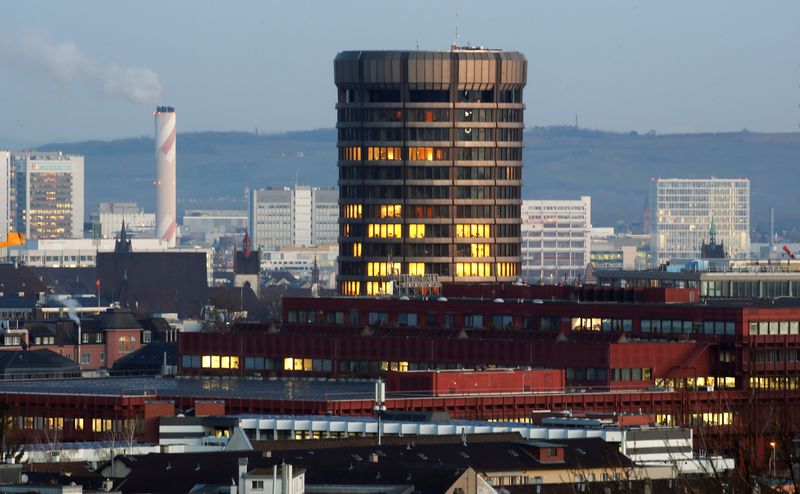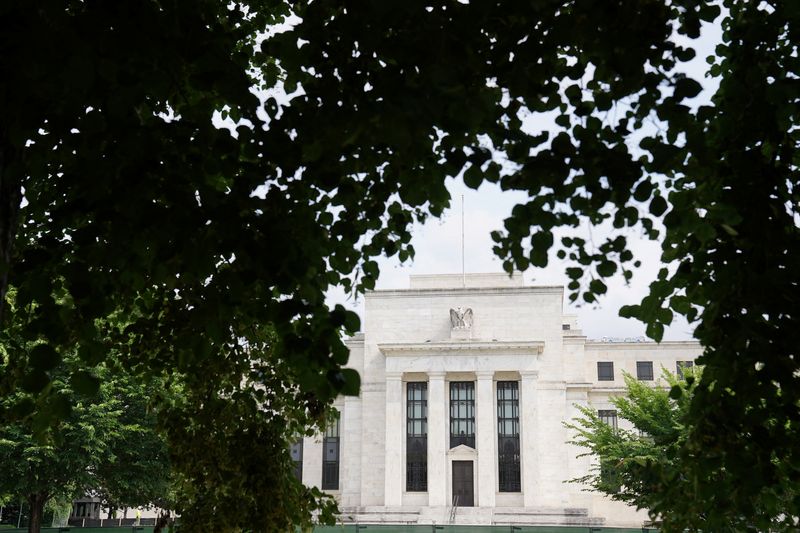By Mike Dolan
LONDON (Reuters) -Sudden ebbs and flows of inflation without equivalent hits to economic output may be a feature of a post-pandemic world of fragile supply chains - potentially requiring more forceful and hyperactive central banking, and possibly in both directions.
The speed of the global inflation spike after the twin shocks of COVID-19 and the Ukraine invasion has by now almost been matched by the disinflation that's followed.
So much so, that central banks are now just as rapidly reversing the steep, and arguably late, interest rate squeeze they used to contain prices over 2022 and 2023.
The truly remarkable outcome despite that roller-coaster is a likely "soft landing" for economies without any major contraction of overall output. And a big question for policy makers, business and financial markets alike is whether we've just returned to square one while dodging a rare bullet.
Trying the frame the lessons of the episode this week, the Bank for International Settlements - the umbrella organisation for global central banks - once again sketched a world where supply shocks may be more frequent and inflation edgier.
But in a speech in London this week, BIS Deputy General Manager Andrea Maechler nuanced the picture to suggest central banks should no longer "look through" supply shocks as temporary inflation irritants in the way they had often done pre-pandemic.
In particular, she spotlighted much steeper supply curves and a steeper "Phillips Curve", which plots the relationship between unemployment and wages, or more broadly output and prices.
The gist of her argument is that such steep supply curves mean bigger moves in prices for a given shift in output, seen most spectacularly as post-pandemic labour shortages led to wage surges for companies that wanted to ramp up business quickly.
Disruptions to overseas supplies and imports - most obviously in the post-Ukraine energy price shock - similarly meant rising output twinned with a supply shock had a much sharper effects on overall prices than previously.
And crucially, the impact on economy-wide inflation was greater and more rapid than prior commodity and sectoral shocks of recent decades because they hit when overall inflation was already above central bank target rates, Maechler said, pointing to BIS studies illustrating that effect.
TAKE CARE
Maechler concluded "central banks must exercise care when assessing the extent to which they can afford to look through supply shocks".
And that should colour their approach as those supply shocks were set to be more frequent in a world of de-globalisation, geopolitical tension, falling workforces, high public debt, climate change and a transition to green energy.
Being more "forceful" and active in their policy response, regardless of the impact on underlying demand, was likely necessary to ensure more volatile inflation in the short term did not disturb longer-term inflation expectations and faith in 2% targets remained.
But most intriguingly, given the head-scratching over how the wild swings in inflation and interest rates of late did not sow a major recession, Maechler said steep supply curves also meant wages and prices may more quickly subside to target with only relatively mild hits to output from higher interest rates.
"Raising policy interest rates in response to adverse supply shocks may have only limited effects on activity if Phillips curves are steep," she said. "Then, slowing the economy to tame inflation could be less costly in terms of output."
"Today's soft landing outlook may be partially explained by the economy - and in particular labour markets - being in a state where the Phillips curves are steeper than had been the case in the decades prior to the pandemic."
UNDERSHOOT
Where all of that fits into today's picture is less clear, though the theme of persistent supply is clearly topical in a week of such ramped-up geopolitical anxiety.
Whether the steep supply curves of the post-pandemic period endure or whether most of the quirks have already been ironed out is another question.
But presumably it would also suggest supply-related developments that see inflation suddenly undershooting targets again and potentially threatening price stability on the downside should similarly be met with central banking force.
Only this week, European Central Bank policymaker Mario Centeno made that case clearly as the ECB en masse appeared to pivot to faster easing. "Now we face a new risk: undershooting target inflation, which could stifle economic growth," he said.
Facing falling monthly prices last month and annual inflation back below 1%, new Swiss National Bank chairman Martin Schlegel also said the SNB was not ruling out taking interest rates back into negative territory.
And even recent hold-outs at the Bank of England suggested they pick up the pace too, with BoE boss Andrew Bailey talking of being "a bit more aggressive" in cutting UK rates.
For investors, the whole scenario points to a more volatile interest rate environment in both directions than they had been accustomed to in the pre-COVID decade.

And yet it could remain a potentially positive horizon for company earnings and equities if broader economies can continue to surf wavier prices and borrowing rates much better than they have done for decades.
The opinions expressed here are those of the author, a columnist for Reuters
(By Mike Dolan; Editing by Jamie Freed)
